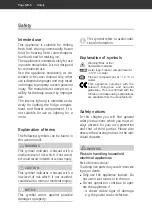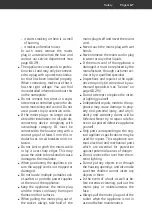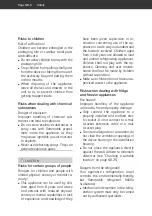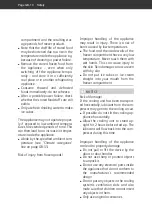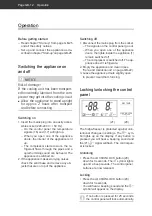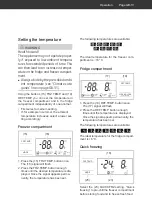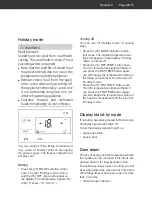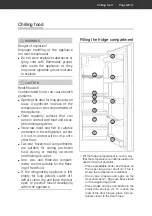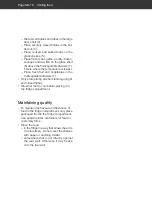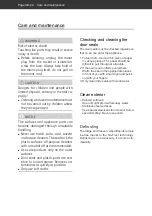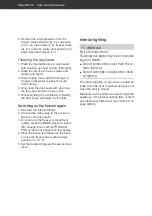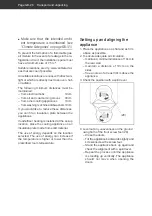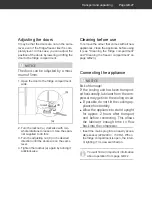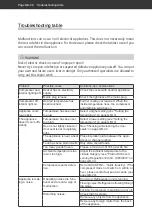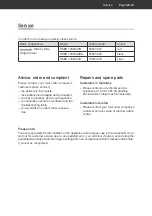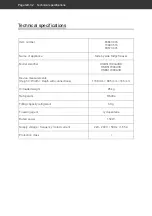
Freezing foods / storing frozen foods
Page GB-20
Preparing the food
• Only freeze high quality food.
• Freeze fresh and prepared food dry and
unseasoned. Unsalted foods are more
durable.
• Allow prepared food to cool before freez-
ing. This not only saves power, but also
prevents excessive frost formation in the
freezer area.
• Carbonated drinks are not suitable for
freezing because the carbon dioxide es-
capes during freezing.
Selecting suitable packaging
Packaging is important when freezing. This
will protect against oxidation, penetration by
microbes, transfer of odours and flavourings
and drying out (freezer burn).
• Only use packaging material that is
strong, impermeable to air and liquid, not
too stiff and labelled. It should be desig-
nated as suitable for freezer use.
Portioning food
• Create flat portions if possible; these
freeze through to the core faster.
• Expel the air from the freezer bag as this
causes the contents to dry out and takes
up space.
• Use plastic clips, rubber bands or adhe-
sive tapes to seal.
• Fill liquid containers no more ¾ full, be-
cause liquids expand when frozen.
• Do not store any glass or metal contain-
ers containing liquid. The containers can
burst.
• Only freeze strong alcohol standing up-
right and closed tightly.
• Label frozen goods according to type,
amount and freezing and expiry date with
a permanent marker or with sticky labels.
Freezing capacity
• Adhere to the maximum freezing capacity.
You will find information about “Freezing
capacity in kg/24 hours” in the data sheet
on page GB-31.
• Up to 10 kg: Once the freezer temper-
ature is -18° C, you can freeze fresh,
room-temperature foods.
• Over 10 kg: Keep fresh goods out of
contact with existing frozen foods as they
could start to thaw. If contact with stored
food cannot be avoided, we recommend
that you create a cold reserve in the
freezer before freezing the fresh goods
(see "Quick freezing“ on page GB-13).
The temperature in the freezer briefly rises af-
ter placing fresh goods inside. After 24 hours,
the goods are frozen to the core.
Storing frozen food
The deep-freeze chain must not be broken
between the manufacturer and your freezer.
The temperature of the frozen food must al-
ways be at least -18° C.
• Therefore, do not buy any goods that
– are in frosty, over-icy chests.
– are stacked above the stipulated high-
load marker.
– partially clumped (particularly easy to
identify with berries and vegetables).
– have snow and juice traces.
• Transport frozen foods in special styro-
foam boxes or insulated bags.
• Observe the storage conditions and stor-
age times on the packaging.
• You can store frozen goods in the entire
freezer compartment.

